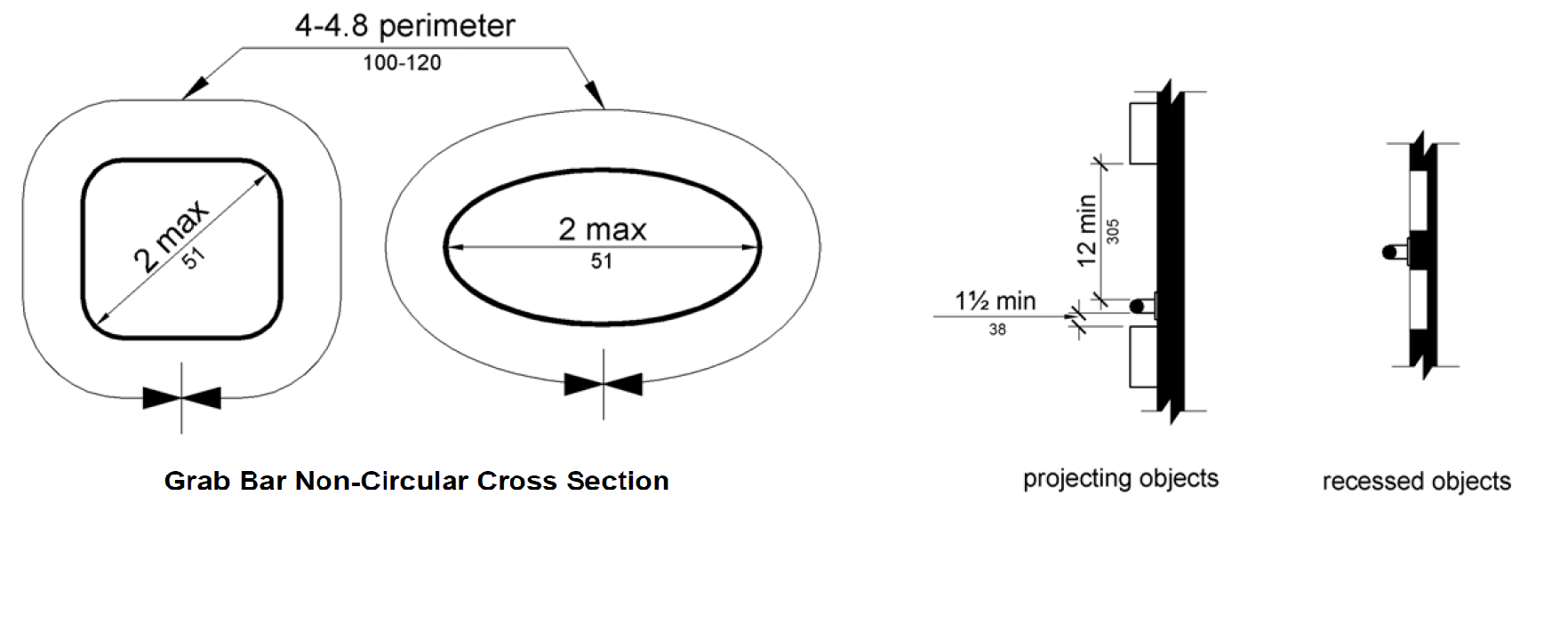

Make sure the handle can be maneuvered with only one hand. Those with mobility issues will need to be able to turn the faucet on and off without excess handling or pressure. Being easy to repair is another must that prevents any inconveniences for the disabled individual. Ideal ADA-Standard Bathroom Components ADA-Compliant Sinksīesides the ADA sink height and minimum clearance for knees and feet, it is also important for lavatories to be sturdy. It should also be able to support a minimum of 250 pounds of pressure. An ideal gripping surface would be 1.25 inches, and the bar should be 1.5 inches away from the wall. The ADA grab bar height from the floor should be between 32 to 36 inches. Grab bars on the wall need to be around 36 inches long - and 42 inches if they’re on the sidewall. This means going for anything that doesn’t need excessive pressure to use. Using the flush valve should be easy for those with disabilities to use. ADA restroom requirements also dictate that the height from the floor to the top of the toilet measure between 17 to 19 inches. The height of the stall should be no more than 70 inches from the ground. And as with other parts of a bathroom, stalls have their own set of ADA requirements.

While typical homes don’t normally feature stalls, certain shared apartments might have them. In other words, using the faucet shouldn’t require more than 5 pounds of pressure. It should be easy and painless to use with one hand, and without any twisting, gripping, or pinching. Faucet UsabilityĪnother ADA bathroom requirement is for the faucet controls to be either electronic or push a touch. It is important for the floor space below the sink to be clear, with the insulating pipes tucked under the sink. It should also have a width of 30 inches. It is necessary for the sink to have a depth of 11 to 25 inches. An ADA sink height would not be more than 34 inches from the ground - besides the 27-inch clearance for the knees. It goes without saying that the sink should not be high enough that the disabled person has trouble reaching it. New ADA Sink and Faucet Requirements Sink Height

This makes it convenient for the person with mobility issues to use the ADA-compliant toilet - which should have a height of 17 to 19 inches. And a space of 50 inches near the rear wall allows for the wheelchairs to turn. The sidewalls should have a circumference of at least 60 inches around them. There should be a distance of 16 to 18 inches from the sidewall to the toilet’s centerline. The disabled individual should also have a clearance of 9 inches for the feet and 27 inches for the knees. Sink AccessibilityĪccess to the sink should be 30 inches by 48 inches, bearing in mind that the bathroom door can open into this zone. As such, it continuously tries to revise and find new ways to make it more comfortable for disabled individuals to use the facilities. The ADA constantly ensures that its standards are always up-to-date. New Guidelines for an ADA-Compliant Single-User Bathroom It’s also worth mentioning that certain accessible features such as walk-in showers are even huge in recent bathroom trends. This means installing components such as grab bars and lever faucets and making sure the dimensions accommodate those with disabilities. It is supposed to make it convenient for wheelchair users, and those who have the help of an aide, to use the bathroom. The bathroom’s features and layout make it accessible for those with mobility issues. An ADA-compliant bathroom is essentially one that meets the standards of the Americans With Disabilities Act (ADA).


 0 kommentar(er)
0 kommentar(er)
